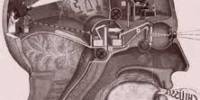Researchers have been looking for longer-lasting and more effective cancer treatments during the past ten years. Stimulator of Interfron Genes activation (STING agonism), one of the numerous immunotherapies, has come to light as a particularly promising treatment that uses the patient’s immune system to fight malignancies all over the body.
Although potentially revolutionary, there are still significant obstacles to be overcome before patients can use STING agonism as a therapy option. For instance, STING agonist medicines administered intravenously frequently have insufficient drug stability and poor immune cell absorption.
Addressing these challenges head-on, investigators at Brigham and Women’s Hospital, a founding member of the Mass General Brigham healthcare system, have now designed stimuli-responsive nanoparticle structures, allowing STING agonist drugs to be released when reaching the target cells.
Researchers reveal that stable nanoformulations not only eliminated active tumors in mice, but also taught their immune systems to spot and get rid of further tumors. Their findings were published today in Nature Nanotechnology.
“Our goal is to use STING agonism to instruct the immune system to treat cancer cells as invaders, which necessitates the design of stable and potent nanostructures that enable STING to reach the right organs and the right cells,” said senior author Natalie Artzi, Ph.D., a principal investigator in the Brigham’s Department of Medicine.
Our research addresses the fundamental interplay between the immune system and cancer through the use of novel structure that has been designed to be both stable and potent. Moreover, we have demonstrated that targeting secondary lymphoid organs, such as the spleen, is crucial in generating long-lasting antitumor response which has important implications in how we think about immunotherapy delivery.
Natalie Artzi
Lead author Pere Dosta Pons, Ph.D., an instructor in the Brigham’s Department of Medicine, highlighted the novelty of their approach: “We not only are training the immune system to target and eliminate cancer cells, but also to generate immune memory for preventing cancer recurrence.”
STING agonism involves the activation of a protein called the stimulator of interferon genes (STING), which alerts the immune system to the presence of invaders. When a virus or bacterial species infect the body, small messenger molecules known as cytosolic cyclic dinucleotides (CDN) attach themselves to STING.
Proinflammatory cytokines are produced in response to this activation, which then recruits immune cells including T-cells, macrophages, and natural killer cells to the affected area to fight the infection.
Cancer evades this STING pathway by disguising itself as the body’s own cells. STING agonists have been administered to immune cells in tumor microenvironments and tumor-draining lymph nodes in an effort to train the immune system to recognize and combat cancer cells.
In their new paper, the Brigham team describes a new nanoparticle structure that more effectively transports CDN molecules into immune cells. The chemical is made more stable and potent when injected into the body thanks to its structure, which directly binds lab-produced CDNs to nanoparticles formed of poly(beta amino esters), or pBAEs, expanding the therapeutic window. When the cargo reaches the target cells, the nanostructure detaches the CDN messengers and taxis them directly to the malignancies.
To evaluate the effectiveness of their approach, the team administered the CDN-nanoparticle (CDN-NP) compounds to mice with melanoma, colon cancer, and breast cancer tumors. They demonstrated that their CDN-nanostructures were ingested by target immune cells in secondary lymphoid organs and the tumor microenvironment, giving mice long-term protection against malignancies. Sixty days after their initial treatment, surviving mice were given tumors again, and they were able to naturally reject the tumors.
The researchers created a set of design guidelines that must be taken into account while administering immune therapy, including how secondary lymphoid organs affect the course of treatment. They demonstrated how the spleen is essential for training the immune system to produce immunological memory.
Studies like this one highlight the possibility of developing gene therapy delivery systems for treating diseases like cancer in addition to addressing fundamental issues in cancer and immunology.
In explaining the significance of the work, Artzi said, “Our research addresses the fundamental interplay between the immune system and cancer through the use of novel structure that has been designed to be both stable and potent. Moreover, we have demonstrated that targeting secondary lymphoid organs, such as the spleen, is crucial in generating long-lasting antitumor response which has important implications in how we think about immunotherapy delivery.”
















